
The canton of Bern, or Berne, is one of the 26 cantons forming the Swiss Confederation. Its capital city, Bern, is also the de facto capital of Switzerland. The bear is the heraldic symbol of the canton, displayed on a red-yellow background.

Lenzburg Castle is a castle located above the old part of the town of Lenzburg in the Canton of Aargau, Switzerland. It ranks among the oldest and most important of Switzerland. The castle stands on the almost circular castle hill, which rises approximately 100 m (330 ft) over the surrounding plain but is only about 250 m (820 ft) in diameter. The oldest parts of the castle date to the 11th century, when the Counts of Lenzburg built it as their seat. The castle, its historical museum and the castle hill with its Neolithic burial grounds are listed as heritage sites of national significance.
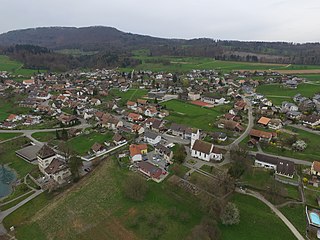
Auenstein is a municipality in the district of Brugg in the canton of Aargau in Switzerland.

Toffen Castle is a Baroque country estate in Toffen, Canton of Bern, Switzerland. It is a Swiss heritage site of national significance.

Kasteln Castle is a castle in the municipality of Oberflachs in Canton Aargau, Switzerland. It is located west of the village on a rocky outcrop, surrounded by vineyards and woods. Today, it serves as a boarding school for students with behavioral problems. The immediately adjacent castle Ruchenstein was demolished in 1643, when the small fort was rebuilt into a Schloss Kasteln.

Schenkenberg Castle is a castle ruin above the municipality of Thalheim in the canton of Aargau in Switzerland. It was built in the 13th Century by the Habsburg dynasty, was the administrative seat for 260 years of a bailiwick of the city of Bern and fell into ruin in the 18th century.

Münchenwiler Castle or Château de Villars-les-Moines is a castle and former Cluniac priory in the municipality of Münchenwiler of the Canton of Bern in Switzerland. It is a Swiss heritage site of national significance.

Oberhofen Castle is a castle in the municipality of Oberhofen of the Canton of Bern in Switzerland. It is a Swiss heritage site of national significance.
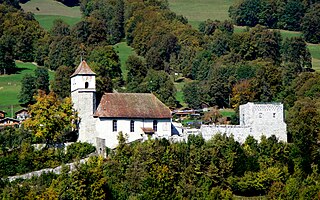
Ringgenberg Castle is a castle in the municipality of Ringgenberg of the Canton of Bern in Switzerland. It is a Swiss heritage site of national significance.

Landshut Castle is a castle in the municipality of Utzenstorf of the Canton of Bern in Switzerland. It is a Swiss heritage site of national significance.

Wimmis Castle is a castle in the municipality of Wimmis of the Canton of Bern in Switzerland. It is a Swiss heritage site of national significance.

The Altes Schloss Bümpliz is a castle in the section of Bümpliz-Oberbottigen in the city of Bern of the canton of Bern in Switzerland.

Hünigen Castle is a castle in the municipality of Konolfingen of the Canton of Bern in Switzerland.

Oberer Mannenberg Castle is a ruined castle in the municipality of Zweisimmen of the canton of Bern in Switzerland. It is a Swiss heritage site of national significance.
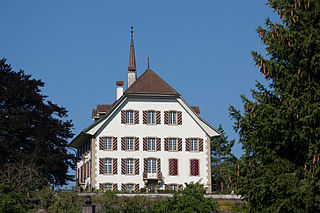
Riggisberg Castle is a castle in the municipality of Riggisberg of the canton of Bern in Switzerland.
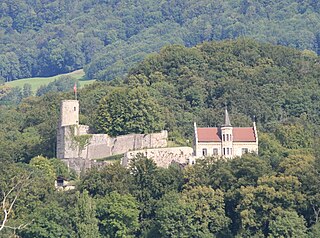
Bipp Castle is a partially ruined castle in the municipality of Oberbipp of the Canton of Bern in Switzerland.

Bernau Castle is a ruined castle in the municipality of Leibstadt in the canton of Aargau in Switzerland. It was mostly destroyed in a fire in July 1844 leaving only a few ruined walls still visible.
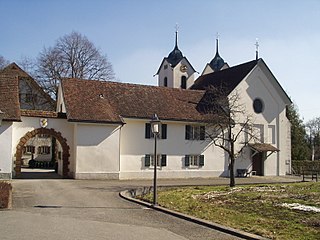
Böttstein Castle is a castle in the municipality of Böttstein in the canton of Aargau in Switzerland.

Trostburg Castle is a small castle in the municipality of Teufenthal in the canton of Aargau in Switzerland.
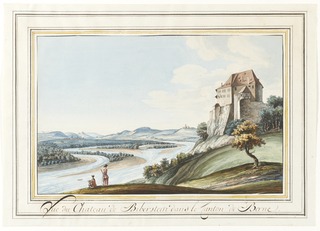
Biberstein Castle is a castle in the municipality of Biberstein in the Swiss canton of Aargau.





















